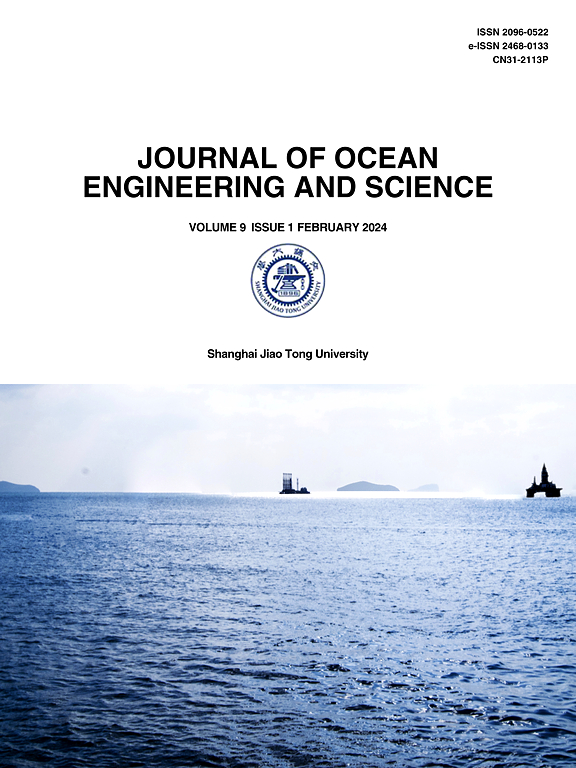真实海迹样本间隔对三自由度船舶运动预测非参数模型的影响
IF 11.8
1区 工程技术
Q1 ENGINEERING, MARINE
引用次数: 0
摘要
基于真实海迹数据的船舶操纵性模型的准确性很大程度上依赖于数据质量,噪声和测量误差给数据处理和模型训练带来了重大挑战。本研究采用深度学习方法对3-DoF船舶机动性预测进行非参数建模,利用海上进行的之字形试验数据。它考察了测量设备的局限性如何影响数据分析,强调了不同样本间隔对模型精度的影响。我们的研究进一步探讨了深度神经网络在捕获低频成分方面比高频成分更有效的功效,讨论了用于训练集构建的响应域的数据采样过程和频率分析。仿真结果表明,过小和过大的样本间隔都会显著影响运动、位置和航向角的预测。此外,为了提高对基于深度学习的非参数模型的评估,结合最小舵角的测试用例对评估预测精度至关重要。一般来说,0.4 s到0.6 s的采样间隔被认为是真实海径数据下行采样的最佳选择,可以平衡精度和计算效率。本文章由计算机程序翻译,如有差异,请以英文原文为准。
Influence of sample intervals in real-sea trails on the nonparametric model of 3-DoF ship motion predictions
The accuracy of ship manoeuvrability models based on real sea trail data heavily relies on data quality, as noise and measurement errors pose significant challenges in data processing and model training. This study employs a deep learning approach for the nonparametric modelling of 3-DoF ship manoeuvrability predictions, utilizing data from zigzag tests conducted at sea. It examines how the limitations of measurement equipment affect data analysis, emphasizing the impact of different sample intervals on model accuracy. Our study further explores the efficacy of deep neural networks in capturing low-frequency components more effectively than high-frequency ones, discussing the data sampling process and frequency analysis in the response domain for training set construction. Simulation results indicate that both excessively small and large sample intervals can significantly compromise predictions of motion, location, and heading angles. Moreover, to enhance the evaluation of the deep learning-based nonparametric model, incorporating a test case with a minimal rudder angle is crucial for assessing the prediction precision. Generally, a sample interval ranging from 0.4 s to 0.6 s is identified as optimal for data down sampling in real sea trails, balancing accuracy and computational efficiency.
求助全文
通过发布文献求助,成功后即可免费获取论文全文。
去求助
来源期刊

Journal of Ocean Engineering and Science
Multiple-
CiteScore
11.50
自引率
19.70%
发文量
224
审稿时长
29 days
期刊介绍:
The Journal of Ocean Engineering and Science (JOES) serves as a platform for disseminating original research and advancements in the realm of ocean engineering and science.
JOES encourages the submission of papers covering various aspects of ocean engineering and science.
 求助内容:
求助内容: 应助结果提醒方式:
应助结果提醒方式:


